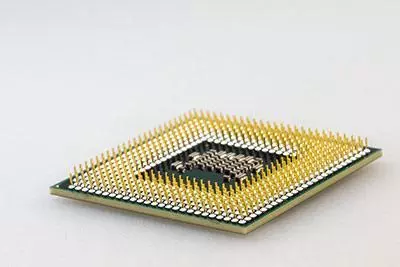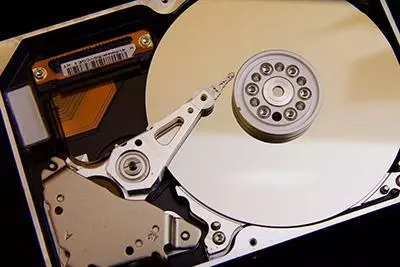 We know that many people are daunted by talk of CPUs, RAM and Hard drives. However, having at least a basic understanding of the insides of a computer can help ensure that you don't end up buying a machine that's either over or under specced for what you need.
We know that many people are daunted by talk of CPUs, RAM and Hard drives. However, having at least a basic understanding of the insides of a computer can help ensure that you don't end up buying a machine that's either over or under specced for what you need.
First, some generalisations. Do not buy the cheapest machine you can find. Unless you do not value your own time at all, it will not pay off in the long run. If everything takes a little bit longer than it would have done on a device you'd spent £100 more on, all those "little bits" will very quickly add up to a big chunk of time wasted just waiting for your device to respond over the course of a week. At the moment, if you want a machine that does the basics, your budget should be around £500 - £600. A machine that does the basics well will cost £600 - £800. There's no real need to spend more than than unless you're after a machine for specialist applications (eg photo / video editing) or for gaming.
So, let's take a look at a machine. Here's the top result that PC World currently returns:
Here's the headline specs:
- Intel® Core™ i5-8265U Processor
- RAM: 8 GB / Storage: 256 GB SSD
- Graphics: NVIDIA GeForce MX150 2 GB
- Full HD touchscreen
 Processor
Processor
The top one is the CPU. For the most part, Intel CPUs come in 3 flavours. i3, i5 + i7 (there's others, but it's usually one of these three). They are low, medium and high end in that order. So we can see this is one of the medium level CPUs.
Without looking up that specific CPU, there's another thing that product code tells us off the bat. The number after the - signifies the CPU generation. Intel usually release a new range of CPUs every year. This one is i5-8 - an 8th generation CPU. Intel is just releasing their 10th generation CPUs, so this one is 2 years old. There's nothing necessarily wrong with this. While it used to be the case that CPU technology jumped in leaps and bounds from one year to the next, this hasn't been the case for some time. It's unlikely most people would notice any difference between a 2017 and 2019 chip. So we can see the processor is probably fine. What's next?
RAM and Storage
Here's the one that many people mix up because the measurement (gigabytes - GB) is the same. It also doesn't help when they lump them together like this. RAM is something that a PC uses to store data temporarily and is being constantly being overwritten with whatever the device is dealing with in that moment. At the moment, we wouldn't suggest getting a PC with anything less than 4GB. If at all possible, aim for 8GB like this machine has. That should be enough to keep it running smoothly for the foreseeable future. Any more than that is probably overkill.
 The storage is listed as 256GB SSD. Storage is the permanent space available to the machine, and so that includes all your files. Some of that space will be filled with the operating system (usually Windows), so you'll have whatever's left available to you. Unless you plan to only use your machine for web browsing, we'd suggest that 256GB is the minimum worth considering these days. Any less than that, and you'll quickly run out of space. If you plan to store lots of music, video or photos on the machine, you may want to consider a second drive purely for storage, or to store these files in the cloud with OneDrive, iCloud, Dropbox or similar.
The storage is listed as 256GB SSD. Storage is the permanent space available to the machine, and so that includes all your files. Some of that space will be filled with the operating system (usually Windows), so you'll have whatever's left available to you. Unless you plan to only use your machine for web browsing, we'd suggest that 256GB is the minimum worth considering these days. Any less than that, and you'll quickly run out of space. If you plan to store lots of music, video or photos on the machine, you may want to consider a second drive purely for storage, or to store these files in the cloud with OneDrive, iCloud, Dropbox or similar.
The other important thing in that storage listing is SSD. This means it's a drive with no moving parts, and a lot quicker than old fashioned hard drives. We would suggest that you always get a machine with an SSD these days. The speed difference between an SSD and traditional mechanical drive is so great that there isn't really any cost saving that's worth the trade off in time that you will lose. Note - there's one trap here - you'll see some machines listed as "Hybrid SSD". This is not the same thing as an SSD.
The rest
There is a graphics card listed here, but unless you plan to use the machine for gaming, this probably doesn't matter. Graphics cards don't tend to make much of a difference to web / email browsing.
Related is the "Full HD touchscreen". To get technical, Full HD means 1920 pixels wide by 1080 pixels tall. This isn't much of a boast though. You'll find that most screens match this spec these days. When you start getting to the more expensive machines, you may see "Ultra HD", which means it's a 4K screen. A screen like this is probably overkill on a laptop. If you're buying a desktop machine with a big 24" + monitor, that's when you're likely to start noticing the difference here.
Anything else we need to check? We probably want to make sure it has USB 3 ports. A USB-C port is also very desirable. You may not have any USB devices that use this yet, but as it's the new standard, you almost certainly will soon. You may want to check it has Bluetooth / a webcam / a microphone depending on what you're planning on using it for.
Hopefully, this has helped demystify things a bit for you!
